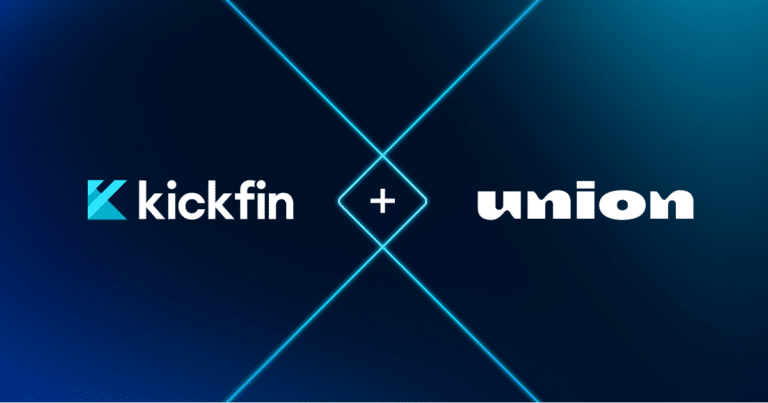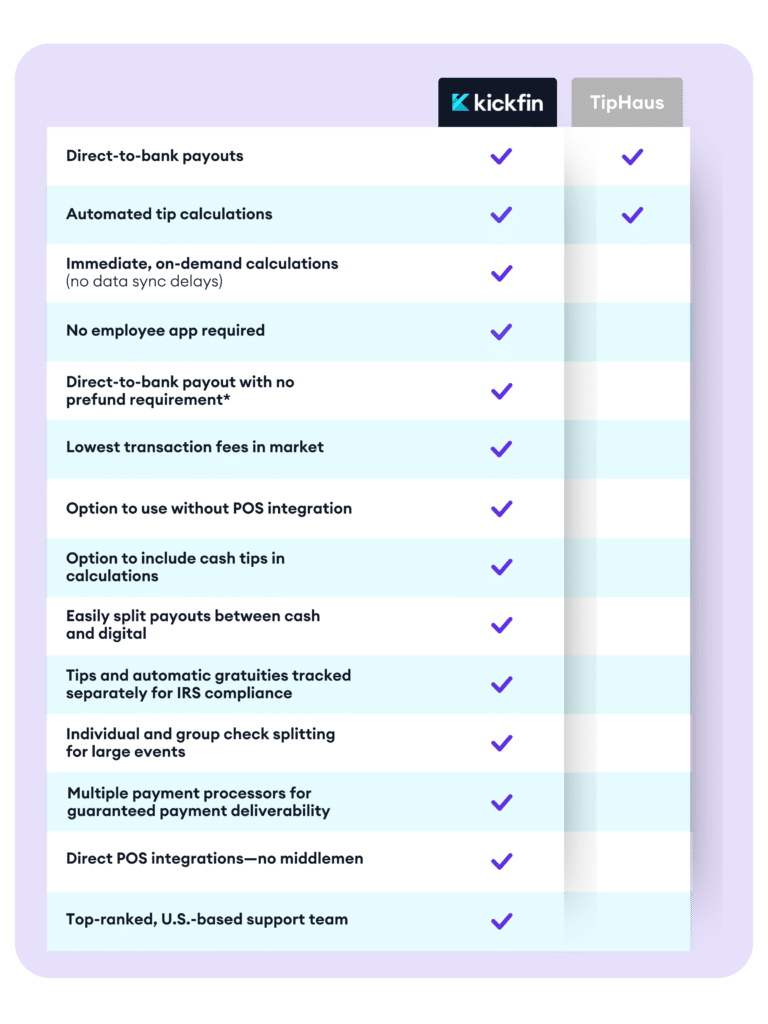Change is constant in the restaurant world — and it can be a great thing. (Carryout cocktails, anyone?)
But for upwards of 11 million people, restaurants are workplaces. And change in the workplace? That can be pretty scary for all parties involved.
In the last few years, there’s been a whole lot of change for restaurant workers: between a pandemic, an unstable economy, a tough labor market, supply chain nightmares, and a rapid digital transformation…it’s been a lot, to say the least.
Which means there’s never been a better time to implement a well-considered change management strategy. Whether it’s a new menu, new software, or even new ownership, there are a few things you can do to help your staff prepare for and adapt to the changes that always seem to be coming down the pike.
If you’ve never had a change management strategy, or if yours needs an update: here’s a list of 8 best practices for successfully introducing and implementing changes in your restaurant.
1. Communicate the change — and the why behind it
The number-one way to ensure a smooth transition: effective communication.
Don’t just spring a completely new system on your staff. Communicate changes as early as you can and offer as much transparency as possible.
Remember: while change can be a hard pill to swallow, it’s a whole lot more palatable if your employees understand why it’s happening. Here’s a simple way to structure your initial communication around a change:
- Overview: Give them a brief summary of the change. Keep it short and simple — and let them know that further details are coming soon.
- Logic: Explain your rationale behind the change. Was there an obvious problem that this change will solve? And why now?
- Benefits: Show your employees how the change will positively impact the restaurant (and, hopefully, the employees themselves). For example, if a new system will improve the customer experience, then your servers and bartenders can expect higher tips (woo!). And of course, remind them that a successful restaurant means greater job security.
- Details: How will the change play out? Explain how the change will affect day-to-day operations and processes.
- Timeline: Lay out all of the key dates for the transition. Mark down any big training or implementation days, the day when the change will officially take effect, and a future date for employees to provide their feedback about the new system.
2. Use the proper channels (hint: more than one)
Make sure that no employee misses the memo on a major change.Here are a few things to remember when getting the word out:
- Employ multiple channels. Whatever your “primary” communication is, you likely have multiple ways of reaching employees and distributing information. Especially for big changes, make them hard to miss. Maybe in addition to a team meeting, you also send out a text, hit up the #announcements channel on Slack, and hang a flier in the kitchen. (Pro tip: This is also a great time to evaluate and optimize your communication channels.)
- Consider the gravity of the change. Does your staff need to start wearing blue socks instead of black ones? Might not be worth an all-staff meeting. Was a seasoned manager let go? Probably want to communicate sensitive news in person. Make sure the channels you’re using are appropriate given the nature of the change.
- Squash the rumor mill: In a close work environment, people are going to talk. But getting ahead of “breaking news” in your restaurant and communicating it to employees all at once — instead of letting it trickle through the team — will go a long way in maintaining a healthy, transparent culture.
3. Gather feedback the right way
No, you don’t have to make every decision by committee, or put every change to vote.
But when you do it right, soliciting feedback can be beneficial. Your employees are on the front line and will likely be most affected by a major change — be it a new menu or new closing procedures — so they might bring valuable insights to the table. Bonus: it shows you care about your employees’ POV.
With that being said, we humans are naturally averse to change. If you ask for opinions, expect to hear some strong ones.
So, the million-dollar-question: How do you show that you value your employees’ without creating a free-for-all?
A few tips:
- When you initially communicate the change: Along with presenting the logic behind the decision, be honest about whether the topic is actually open for discussion.
If it’s open for discussion: Put an organized system in place to solicit and review feedback. To help minimize negative, knee-jerk reactions, give employees time to digest the news before asking them to submit feedback. And consider providing guidance to keep that feedback focused and healthy. This could be something as simple as a series of prompts, e.g.:
- What do you like about the change?
- What questions or concerns do you have about the change?
- What suggestions do you have that you think might improve the change?
- If it’s final: You should still make sure every member of your team feels heard and supported. Give them a clear path to voice concerns and be willing to talk through objections.
(If and when you gather feedback, bear in mind: It’s always going to be harder for your employees to effectively weigh all risks and benefits. They’re not running a company, and they don’t have insight into every aspect of the business. At the end of the day, employee feedback should be thought of as an input, not the entire equation.)
4. Get buy-in on the front end
If there’s a natural, trusted liaison between employees and upper management – like your head servers or FOH managers – consider pulling them in early to make them aware of the change before sharing it with the broader team.
A few reasons why this could work in your favor:
- It’s a great relationship-building tactic to demonstrate the trust you have in that person as a team leader.
- They might be able to help you anticipate concerns or objections from the rest of the team, so you can be prepared to address those early.
- If they show that they’re comfortable with — or even excited about — the change, that can help set the tone for everyone else.
- They can act as an additional channel of communication and sounding board for employees and relay back additional insights that you might have missed.
5. Offer options when you can
Again, soliciting feedback can be tricky. Because the status quo tends to be very comfortable, given the choice between change and no-change, many employees will likely choose the latter.
So consider framing the situation as: “The status quo is no longer workable, so we need to make a change. Here’s the option that our management team believes is best for everyone — and here are a few other options on the table.”
Our Kickfin customers do this all the time. While employees love getting their tips instantly, directly to their bank account — moving away from cash can feel daunting for some folks at first. So before making the switch to digital tipping, management might set the stage this way:
- “Cash tip distribution is having a negative impact on our business. We need to move away from cash tip-outs, and we believe Kickfin’s digital tipping solution has the most benefits for you, as employees, and for our operations. We’ll provide all the details as to how Kickfin works and what this change means for you. Another option is to receive your tips on payroll. Let’s talk it through!”
6. Provide training and support
You wouldn’t want to learn a completely new process overnight — so don’t expect the same of your staff. With any major change, make sure to provide several opportunities for staff to prepare before they hit the ground running. Here are a few ways you can do this:
- Host a tasting event for new menu items (a good opportunity to teach them how to suggest drink pairings)
- Hold (paid!) training sessions on a new POS system or technology
- Invite new managers to meet with staff before they take over the helm
- Be available for one-on-one training and questions
Most importantly, don’t expect employees to just “get it” right away. Be accommodating to their questions and provide as much support as they need.
7. Create positive energy
Once again, for the people in the back: change is hard. Acknowledging that your employees might be experiencing some disruption — and recognizing their hard work — can make all the difference when it comes to adjusting and adapting.
Here are just a few ways you can express your appreciation for their flexibility, patience and positive attitude:
- Shout-out employees at pre-shift meetings
- If employees don’t already get a free meal each shift, offer a week of comped employee food
- Give away merch (branded hats, bags, t-shirts, etc)
- Offer a gift card or small bonus as a token of thanks
- Throw a staff party to celebrate a successful transition
8. Check in with your team
After you’ve implemented a new process or change, your work isn’t quite done.
Check in with your staff regularly to see how things are going. Ask them specific questions around the impact of the change — don’t get offended if they answer honestly. You need to know if a new process is actually improving your restaurant’s workflows and day-to-day operations.
Most importantly, give your team ample time to settle into the change and work out any kinks before attempting to course correct.
Bottom line: managing change is really all about managing people. Effective communication, proper training, and fostering a culture of trust and transparency will ensure a smooth transition for all parties involved.
Looking to change how your restaurant manages tip outs? Check out Kickfin’s cashless tip-out platform, and request a demo today.






